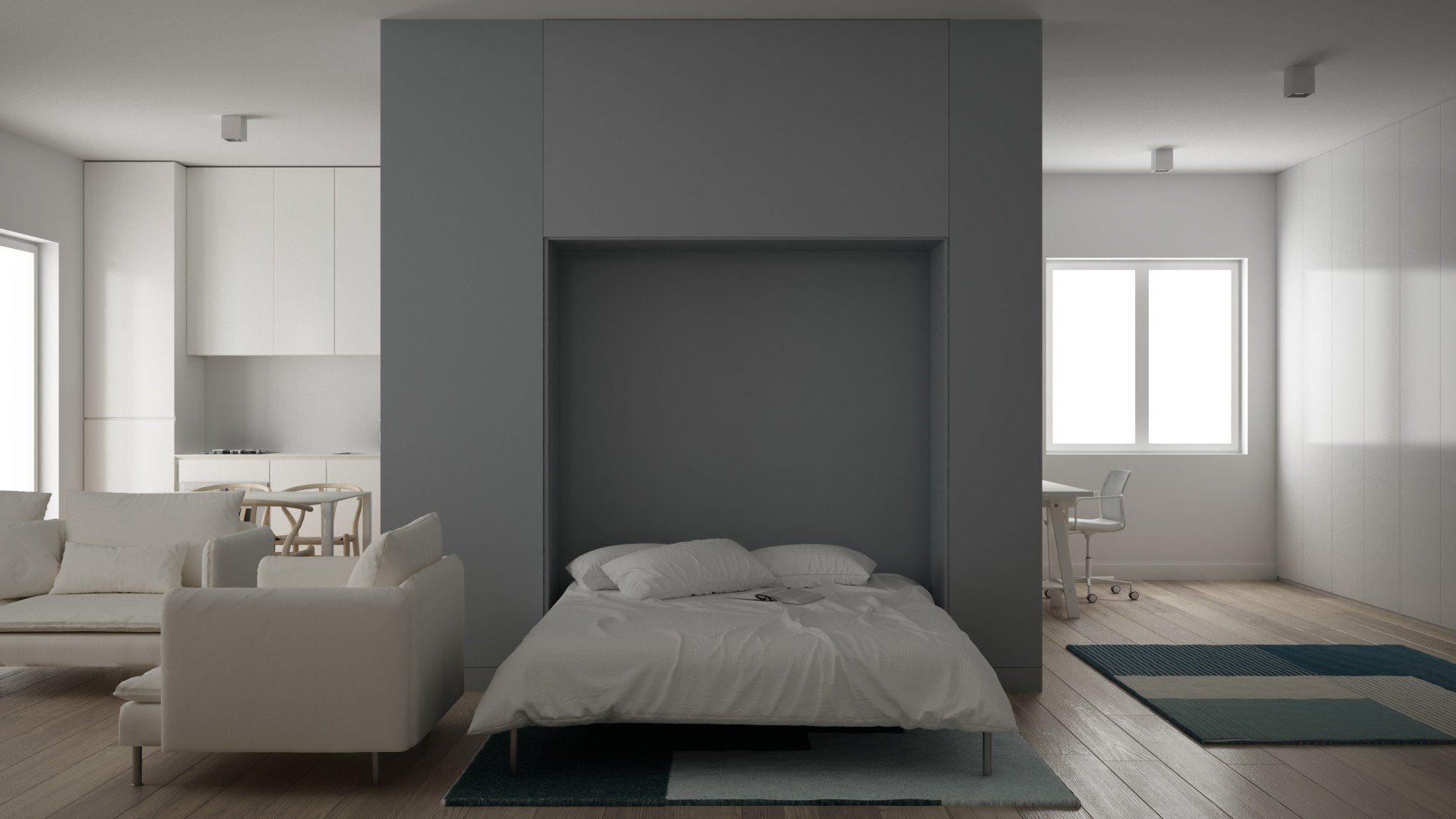The idea of having an extra bedroom in your home and gaining back that valuable space when not needed can be an attainable dream.
Have you heard of a Murphy bed? It’s a bed that can be folded away to give you valuable living space when it isn’t needed. But how does a Murphy bed work exactly?
Today, we’ll look and see exactly how it works and how you can benefit from this space-saver solution in your home. Read on!
Overview of Murphy Beds
Murphy beds are a great addition to any home. They provide the ability to transform a room in a space-saving and efficient manner. They work by folding up into the wall or cabinet when not in use and can easily be brought down or extended when needed.
The bed is tucked away inside a cabinet or closet when not in use. It significantly reduces the amount of floor space in a room.
The operating mechanisms vary depending on the type of Murphy bed, but all work in the same basic way. Generally, a spring, counterweight, or hydraulic mechanism is used to control the folding and expansion of the bed. It requires minimal effort to operate. Furthermore, the bed can be attached to the wall or to a freestanding cabinet for added stability.
Hardware Used in Murphy Beds
Hardware used in Murphy Beds is important in how the bed functions. Steel springs and hinges are the most important components used in these beds.
Springs are the muscles of the bed – they expand and compress, allowing the bed to move up and down. The hinges also play a role in the bed’s movement, as they rotate it up and down.
Additionally, gas pistons are also sometimes included to help ease the bed up and down. Lastly, Murphy Bed frames are typically attached to a wall for stability and come with mounting hardware, so it’s securely fastened into the wall.
To learn more about the main mechanisms of Murphy beds, below is a more detailed explanation.
Piston Lifting Mechanisms
Murphy beds use a strong piston lifting mechanism to lift and store the bed easily. The lifting mechanism consists of a spring-loaded piston and counterbalance arms, between which the bed is attached with a connecting link. This makes for a simple, reliable, and sturdy system supporting a weight of up to 400 lbs.
The lifting piston creates tension, raising the bed with minimal effort. Heavy-duty arms and linkages further facilitate the secure storage of the bed. Setting up the bed is just as easy. Homeowners need only to unlatch the arms and lower the bed until it touches the floor, lifting it until it locks in place.
Spring Lifting Mechanisms
The beds are usually lifted using two spring-lifting mechanisms. The springs allow for easy lifting of the mattress, creating a sleeping space and allowing storage of items underneath.
The springs are also designed to support the weight of the mattress when it is in the open position, keeping it safely off the ground. This means homeowners don’t need to worry about it crashing down on anyone.
The mechanisms allow easy opening and closing while providing a smooth, gentle lift. This means no jerky shifting of the mattress. In addition, the spring-lifting mechanisms usually come with safety features. This is to prevent accidental dropping or slamming the bed shut.
Is It Hard to Lift a Murphy Bed?
The bed is designed with a balancing mechanism on the back so it is easy to lift and fold up against the wall. Homeowners should ensure the bed is securely locked in place and spread out the weight evenly before attempting to lift the bed. When closing the Murphy Bed, the balance mechanism helps the bed lift and close without using too much force.
It is essential to follow the manufacturer’s instructions for detailed instructions on proper lifting and safety procedures. Lastly, the operator should stand back and let the bed lock into place by itself.
With the proper care and caution when lifting and closing the Murphy bed, it should make for an easy and stress-free experience.
Pros and Cons of Owning a Murphy Bed
Owning a Murphy bed provides several advantages and disadvantages. On the positive side, the best Murphy beds provide a great space-saving solution for small homes. They also allow for a comfortable sleep space if the mattress is of the appropriate size and quality.
On the negative side, Murphy beds can be expensive to purchase and challenging to install. The moving parts may cause squeaks and rattles, and Murphy beds are generally less comfortable than regular beds. It can also take some physical effort and time to open and close the bed.
Taking all of these considerations into account, a Murphy bed typically makes an excellent temporary space-saving necessity but may not be the best long-term sleeping solution.
Common Types of Murphy Beds
Various types of Murphy beds are available today, depending on one’s needs and preferences. Wall beds are the most popular type of Murphy bed, designed to be folded up into the wall and tucked away as needed. Other variations include platform beds, which hide the mattress to save floor space, and side folding beds, which also fold away when not in use.
Horizontal Murphy beds, which are wider than vertical versions, are great for larger rooms or guest rooms. On the other end of the spectrum, hideaway beds designed for small spaces offer a discreet sleeping spot that disappears until needed. For those who need an extra bed but don’t have the space for a traditional guest bedroom layout, fold-down beds are a great solution.
All types of Murphy beds provide convenience, comfort, and storage. Whatever the needs may be, one can easily find the perfect Murphy bed to fit a space.
How Does a Murphy Bed Work? The Answer Is Simple!
A Murphy bed is a great space-saving solution for small living quarters. They are easy to operate and come in various styles to suit your needs. Investing in a Murphy bed is a smart purchase that can help you maximize your space at home. Still curious about “How does a Murphy bed work?” Then, bookmark this article so you can get back to it!
Check out different articles on our website today!







